Human History Summary
SUMMARY OF THE HUMAN HISTORY OF BYRON BAY.
The human history of the Byron Bay area can be divided into three periods.
‘The Arakwal people, a tribe of the Bundjalung nation, lived in this area for thousands of years before the arrival of non-Aboriginal people. They saw Captain James Cook sail past on the Endeavour in 1770 on his voyage to chart Australia’s east coast. Cook recorded many Aboriginal campfires close to the beaches and he and Joseph Banks, the botanist on board, observed around 20 Aboriginal people walking along a beach near Cape Byron. Arakwal people called this place Cavanba and this was the first name given to the European settlement which was later changed to Byron Bay.
More information about the Arakwal people, their history, culture and ongoing connection to Country can be found at www.arakwal.com.au
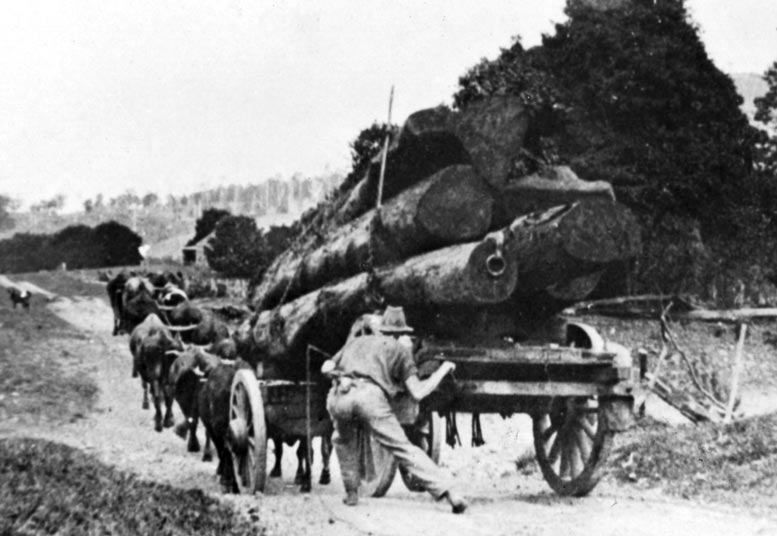
Bullocky managing his team and load . (Source – EJW – RTRL)
The “development and industrial period” starts in the early to mid-1860’s with European “cedar cutters” settling in the area. They felled the big trees, hauled the logs to the coast and loaded them on ships for export. The land was formally opened for free selection in 1861 after a reserve extending from Belongil Creek around Cape Byron down to Tallow Creek had been set aside for a possible town and port.
Gold prospectors followed in 1870 and farmers in 1881. From that time Aboriginals no longer had the right or opportunity to use the land and its resources as they had done before. Farmers cleared land, planted crops, and built facilities to process and package their products. Roads, railways and port facilities were built to get timber, agricultural and other products to market and to bring in supplies and labour.
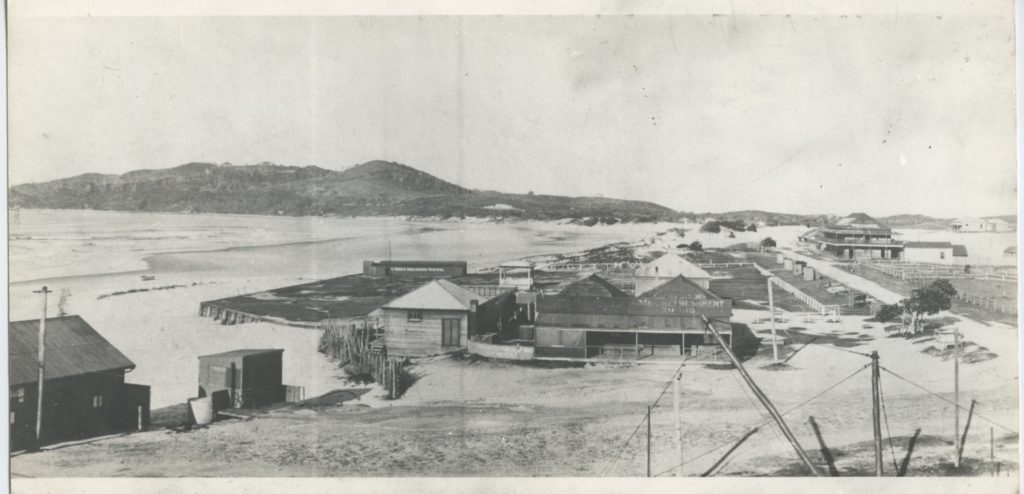
View east across upper Jonson St. Bay St, Pier Hotel on right – early 1920’s. (Source – EJW – RTRL)
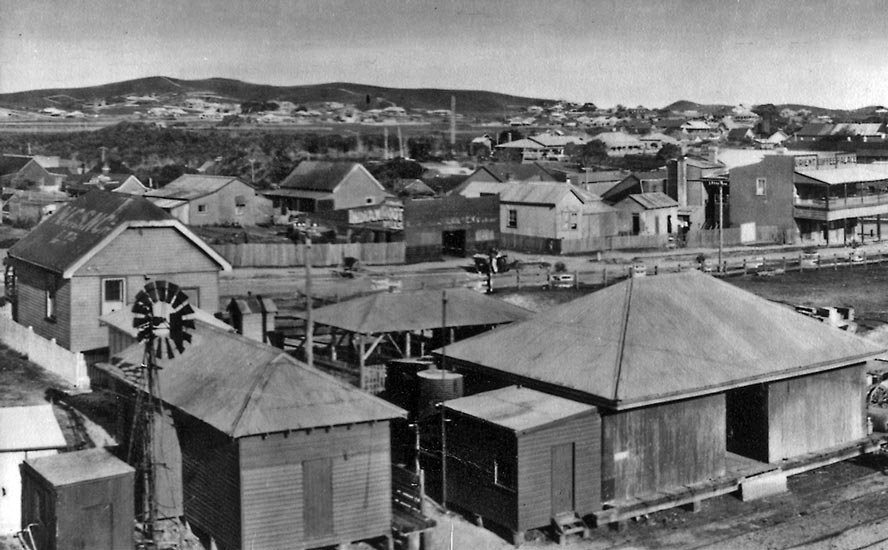
View SE across upper Jonson Street. Early 1920’s. (Source – EJW – RTRL)
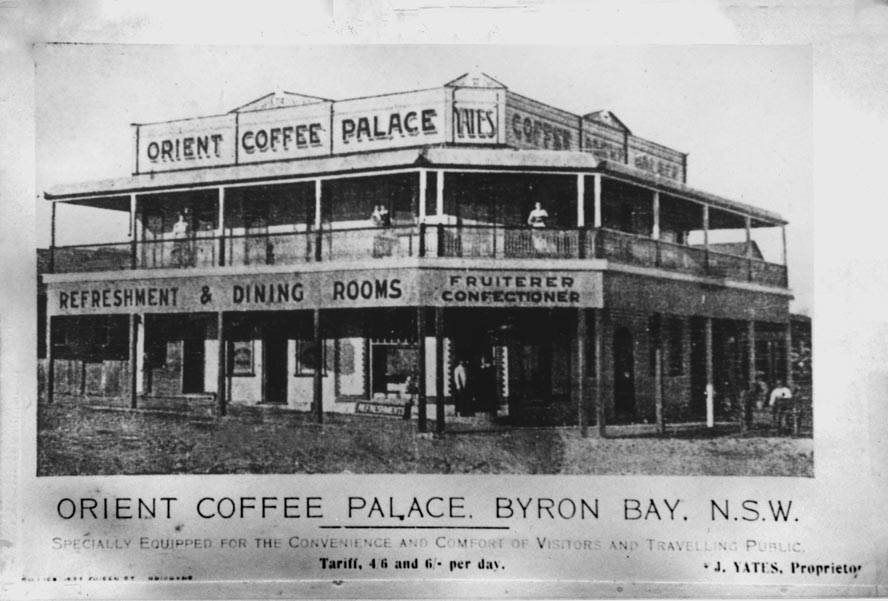
View across upper Jonson St, Orient Palace and “Lawson St” early 1920’s. (Source – EJW – RTRL)
The town of Cavvanba was laid out in 1884. Cavvanba became Byron Bay in 1894 and in 1896 Byron Bay was proclaimed a township with many of its streets named after writers and poets. The town with its schools, churches, sporting facilities, halls and other amenities became the focal point for dairying, meat processing, and banana growers and other cropping industries initially, and later for extractive industries such as sand mining, fishing and whaling. However by the early 1970’s all extractive industries had ceased and the agricultural industries were contracting. Closure of the town’s NORCO dairy factory in 1972, its bacon factory in 1975 and the meat works in 1983 marked the end of the town’s “butter-bacon-bananas-beef and blubber” history. From the early to mid-1970’s the population changed as residents moved elsewhere for work and “outsiders” moved in acquiring existing properties and many of the blocks in newly subdivided areas. Byron morphed from an “industrial” town to one where service and lifestyle businesses became important. Its demographics began to change quickly.
Byron Bay is now in its “recovery times” evolving into an area and town built around tourism, horticulture, conservation and lifestyle businesses. The world-class beaches, hinterland forests, its iconic status as the eastern-most point on the Australian continent, its famous festivals and its arts and entertainment draw tourists from around the world. Coffee, macadamia nut, berry and exotic fruit plantations replace grass grazed by cows. Deforested and mined land is returning to native forest and its original condition reducing erosion and providing habitat for native animals. Significant areas have been incorporated in National parks, Nature Reserves and Conservation Areas. Marine Reserves and fishing restrictions protect all sea-creatures including those previously harvested. People living in Byron Bay are attracted by the life style, community values and diversity the town and district offer as much as for its natural assets and climate. This “recovery” continues.

View toward Pier Hotel across upper Jonson St. About early 1920’s (Source – EJW – RTRL)
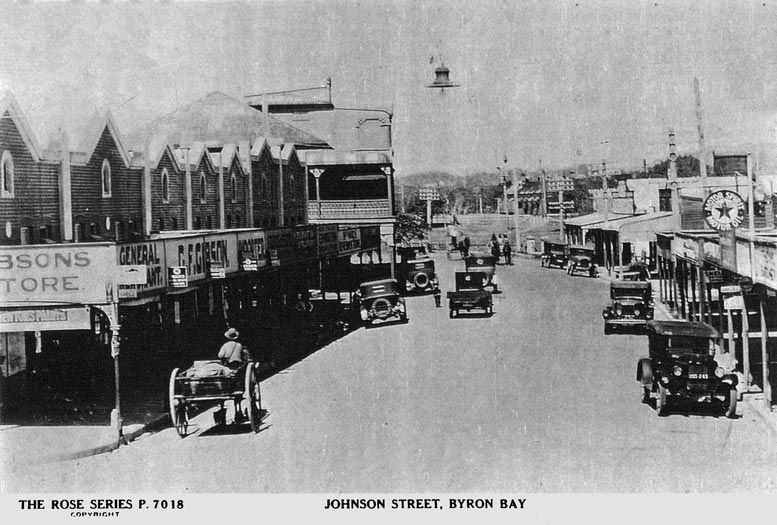
View south down Jonson St. Northern Hotel in centre. About early 1920’s (Source – EJW – RTRL)